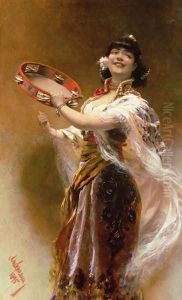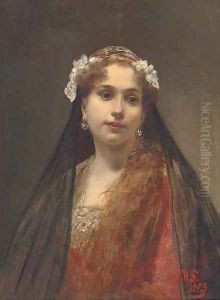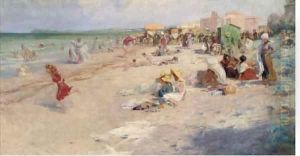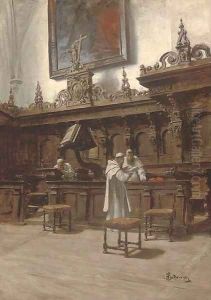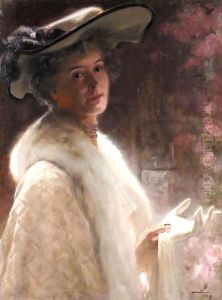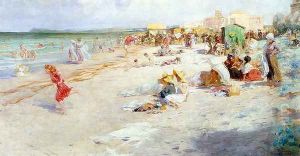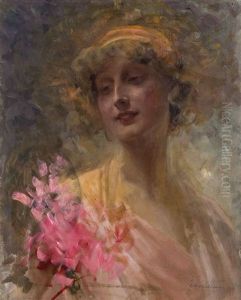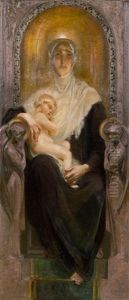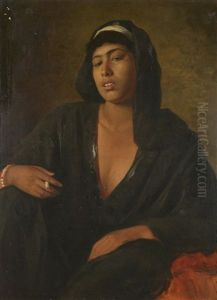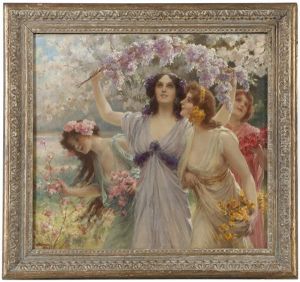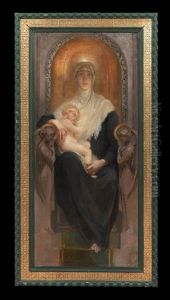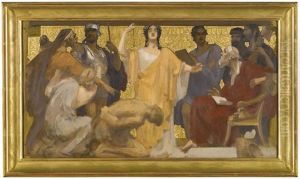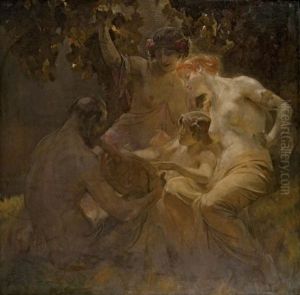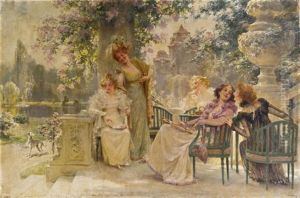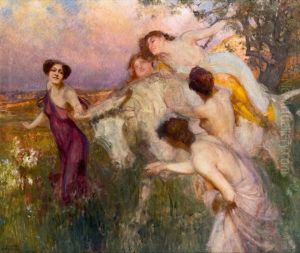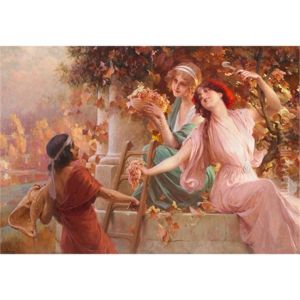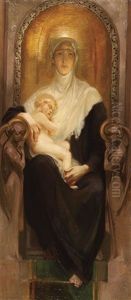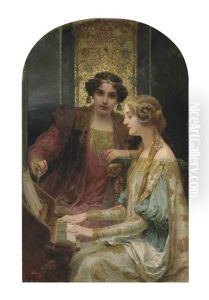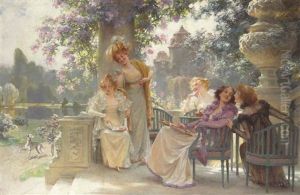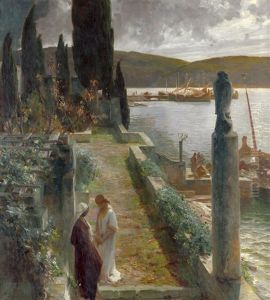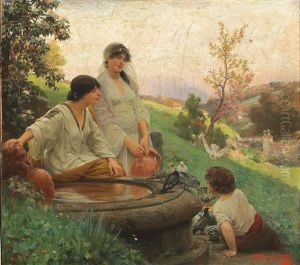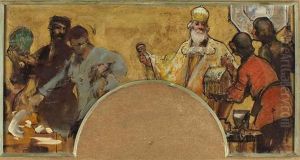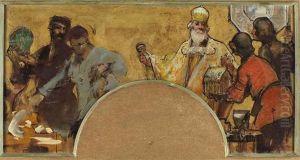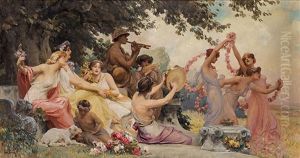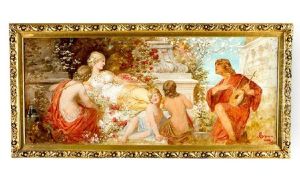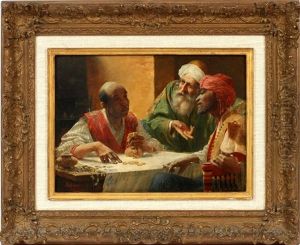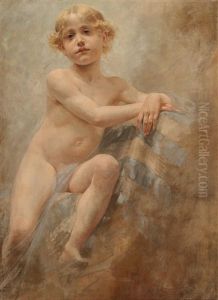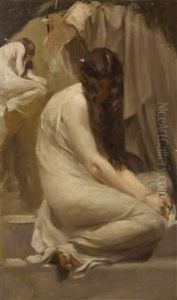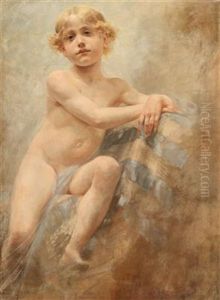Alois Hans Schram Paintings
Alois Hans Schram was a distinguished Austrian artist, born on August 17, 1864, in Vienna. Schram's contributions to the art world are primarily noted in the realms of painting and decorative arts, where his works exemplify the transition and interplay between historicism and the burgeoning Art Nouveau movement at the turn of the 20th century. His education in art began at the Academy of Fine Arts Vienna, where he honed his skills under the tutelage of influential figures such as Christian Griepenkerl, a proponent of academic and historical painting. Schram's artistic journey was further shaped by his studies and experiences abroad, particularly in Italy, which imbued his work with a distinctive blend of classical inspiration and contemporary artistic trends.
Throughout his career, Schram achieved recognition for his mural paintings, decorative works, and illustrations. His murals grace the walls of some of Austria's most significant buildings, serving as testament to his skill in combining historical themes with a modern aesthetic. Notably, his work on the ceiling paintings in the Burgtheater in Vienna and his contributions to the decoration of the Kunsthistorisches Museum showcase his adeptness in monumental art and his ability to infuse traditional subjects with new vitality. Schram's style, characterized by a rich palette and intricate compositions, reflects the influence of Symbolism and Art Nouveau, marking him as a transitionary figure in the evolution of European art.
Beyond his public commissions, Schram's oeuvre includes portraiture, landscapes, and genre scenes, demonstrating his versatility as an artist. His paintings often depict scenes of everyday life, imbued with a sense of romanticism and an eye for detail that echoes the broader artistic movements of his time. Despite his death on April 3, 1919, Schram's legacy endures, with his works continuing to be appreciated for their historical significance and artistic merit. His career encapsulates a period of transformation in the art world, bridging the gap between 19th-century traditions and the modernist impulses that would come to define the 20th century.
